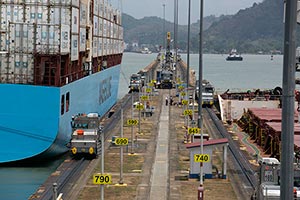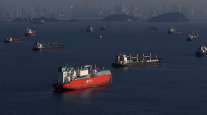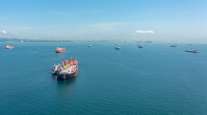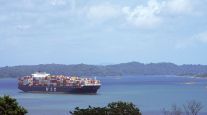Panama Canal Fever Sweeps Globe Again as New Era in Trade Nears

A century after transforming global markets, the Panama Canal is about to redraw world trade once again.
Nine years of construction work, at a cost of more than $5 billion, have equipped the canal with a third set of locks and deeper navigation channels, crucial improvements that will double the isthmus’s capacity for carrying cargo between the Atlantic and Pacific oceans.
When the new locks slide open to receive traffic for the first time in late June, the reverberations will be felt from Asian gas terminals to Great Plains farms and ports from Miami to Long Beach to Santiago.
RELATED: Port of Houston Aims to be Distribution Hub for Center of Country
The debut coincides, fortuitously, with a surge in U.S. natural-gas production that has shale outfits suddenly seeking out new export markets. The deeper channels will be able to accommodate the kind of massive tankers that transport liquefied natural gas, shaving 11 days and a third of the cost off the typical round trip to the Far East. Markets from Chile to China also will become more accessible for oil drillers across the Americas while millions of tons of container shipments originating from Asia could start bypassing western U.S. ports and opt to dock instead along the Gulf Coast or Eastern Seaboard.
The anticipated growth has triggered a multibillion-dollar dredging and building binge at ports in the United States, Caribbean and South America, all seeking to win a share of the traffic boom. Panama is also bidding to become a distribution hub for global manufacturers, with plans to add space for more than 5 million additional cargo containers.
RELATED: Big Cargo Ship in Seattle Signals Big Stakes as Nation's Ports Compete
“There are going to be a lot of feeder services that develop around it," Moses Kopmar, a Moody’s Investors Service analyst in New York, said in a telephone interview. “What it will do is basically unlock a huge amount of the global fleet in terms of being able to transit the canal."
The expansion won’t solve all the canal’s challenges. While tripling the size of cargo vessels it can receive, Panama still won’t be able to take the biggest containerships or crude tankers. What’s more, its traffic will depend on the health of the global economy more than its dimensions, Kopmar said.
But expansion was critical, industry experts say, for a country that risked seeing its shipping route lose relevance if it didn’t grow to handle the increasingly large vessels favored nowadays. The canal, which carried about 340 million tons of cargo in the fiscal year that ended last September, accounts for about 6% of total world trade.
For gas and crude oil companies reeling from the recent collapse in prices, the drop in time and shipping costs will provide a much-needed lift. Corn, soybean and wheat growers in the United States also stand to benefit, along with importers such as Dole Food Co. Inc. and Chiquita Brands International Inc.
“We can send gas ships that couldn’t fit through the canal before," said Bill Diehl, president of the Greater Houston Port Bureau, a maritime industry trade group. “Asia looks like a good market for us now. The shipping costs look like a fair fight."
While the current locks are too small for most natural-gas carriers, almost 90% of the world fleet will be able to use the canal after expansion, the authority says. That’ll cut the round trip from the U.S. Gulf to Asia to about 20 days, compared with 31 days through the Suez Canal or 34 days around Africa’s Cape of Good Hope. Sailing from Louisiana to Tokyo via Panama would be about 35% cheaper than taking the Suez, said Jason Feer, head of business intelligence at Houston-based ship broker Poten & Partners.
“It certainly gives U.S. LNG producers options,” Feer said, “and it is a significant percentage of the reason that Asian buyers have been willing to sign contracts with U.S. producers.”
The bigger canal also may trigger a shift for containerships that carry everything from clothes to chemicals into the United States, the world’s largest importer. With the latest generation of ships too large for the original locks, most of that traffic now unloads in Los Angeles, Seattle and other West Coast destinations.
Though Western ports will retain a time advantage even after the new locks are in operation, cities from New York to Houston have been scrambling to upgrade facilities so they can handle the larger ships and volumes they expect. American ports will spend about $150 billion over the next four years to reduce congestion and accommodate bigger ships, the American Association of Port Authorities estimates. Caribbean destinations are also bidding to become distribution and logistics hubs for the increased traffic. Jamaica alone envisions about $8 billion in investments.
“It’s something you’ve got to do to remain relevant," said Brian Taylor, CEO of the Jacksonville Port Authority, which is seeking federal aid for a $700 million plan to deepen its waters in northern Florida. “All ships are getting bigger."
And so is the Panama Canal.




